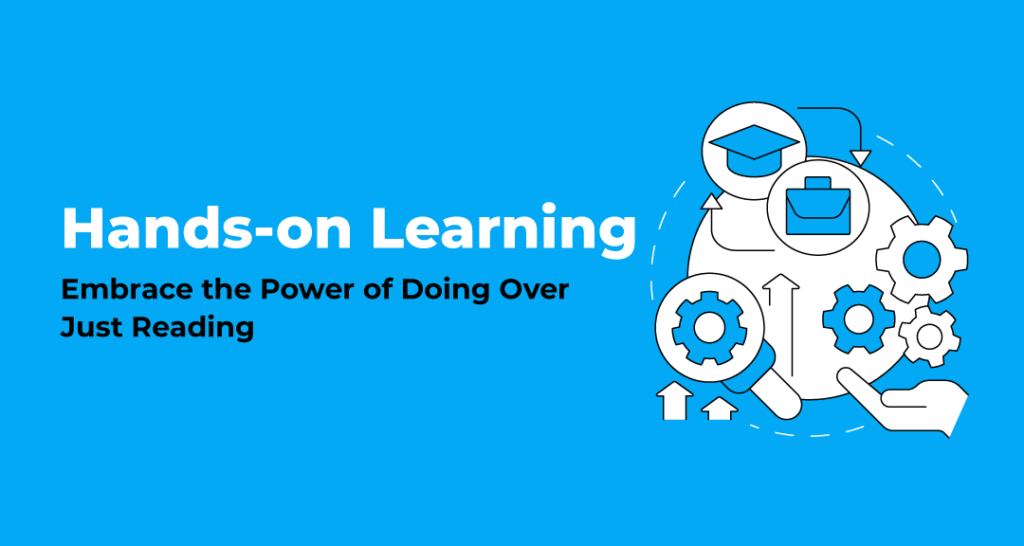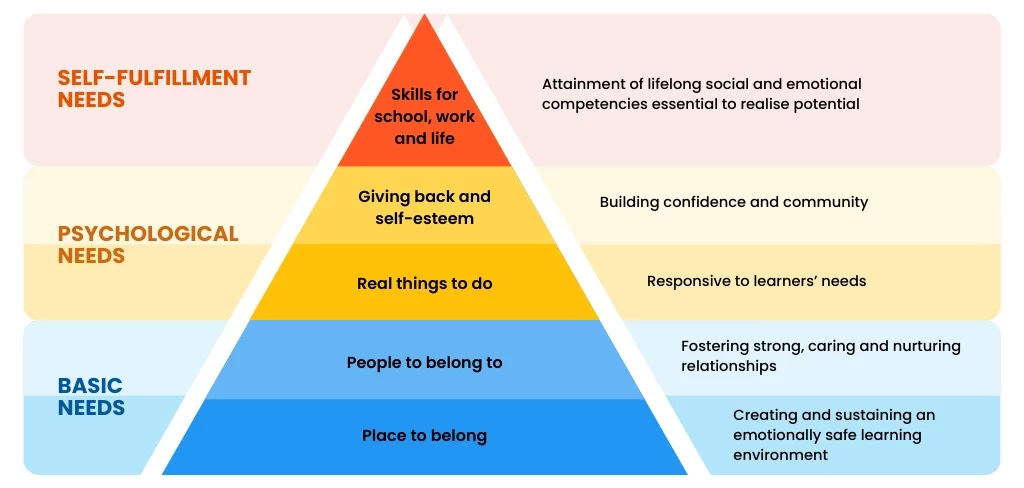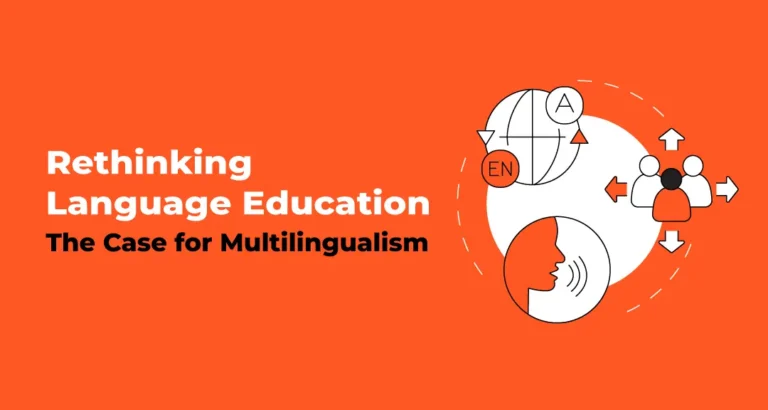Hands-on Learning: Embrace the Power of Doing over Mere Reading
- School Leaders
- August 17, 2024
- VOLT Learning

Gone are the days when the traditional classroom-based learning reigned supremely. We certainly have come a long way since the time when learning lacked engagement and exposure to important skills, as memorization and repetition were often prioritized over critical thinking and real-world application.
If learning can be defined as the evolution of mind, then we have reached the phase of hand-on learning that promotes holistic development by incorporating practical real-world scenarios inside the classroom. Since all students are not born with the same caliber, forcing them to adhere to a singular style of learning is implausible. Keeping that in view, hands-on learning has taken precedence over traditional learning as an integral part of academics. There is no gainsaying that it helps students develop a deeper understanding of a particular topic. Let’s see how and why hands-on learning has come to be recognized as a significant tool of pedagogy.
Hand-on learning debunks the long-held belief that a “one-size-fits-all” method of restrictive traditional teaching is sufficient for developing critical thinking, problem-solving, or decision-making skills among students. Also referred to as Kinesthetic learning, the hands-on learning method perfectly combines both visual and auditory elements with greater emphasis on encouraging students to explore, experiment and apply concepts in real-world contexts.
The pillars of effective active learning depend on hands-on experiential learning style because it helps teachers to nurture educational excellence.

Powered by the hands-on learning methods, students feel more connected and engaged throughout their learning journey. The pedagogy underpinning active hands-on learning is fully aligned with many benefits. For instance, when teachers prioritize Kinesthetic learning inside the classroom, students are on the verge to:
- Unlock multi-sensory engagement through actions
Hands-on learning approach encourages learners to transform into active participants instead of being the passive respondents of information. It makes learning enjoyable and memorable by directly combining visual and kinesthetic elements while engaging them physically with materials, tools or projects.
Thus, students experience multi-sensory engagement by getting involved in activities where they touch, recreate, build and experiment. When students develop the ability and skill to physically modify or recreate objects, conduct experiments and create something on their own, they are more likely to retain the information compared to simply reading or listening. –Consequently, they can understand a topic more effectively and tangibly unlike what they could have done through rote memorization.
- Develop essential skills
Hands-on learning is paramount when teachers implement it correctly inside the classroom. It makes students analyse information, question assumptions, and evaluate outcomes, all of which enhance their critical thinking and decision-making capabilities.
When teachers introduce hands-on activities, students have to apply the right approach to solve the problem at hand by making right selections of solutions available, thinking creatively, doing experiments as well as engaging in trial and error approach. This develops problem-solving skills as they are compelled to think outside the box, and come up with innovative ideas.
- Gain practical real-world experience
As stated earlier, the age-old formal education lacks real-world situation exposures. Hands-on learning bridges the gap between theory and practice by providing students greater exposure to what they’ve learned in real-world contexts and letting them gain a deeper understanding of concepts. Thus, this approach makes learning relevant beyond the classroom, and prepares students with practical skills that are important for them to thrive in real-life scenarios, and become better prepared for future careers.
Classroom Activities to Encourage Hands-on Learning: Useful Tips for Teachers
Teachers can tailor hands-on activities to meet the needs of different students, providing support and challenges based on individual abilities and interests. Listed below are a few collaborative hands-on activities that encourage students to work together, communicate and share ideas to develop interpersonal skills.
- STEM Adventures in the classroom
STEM projects offer a wealth of hands-on learning opportunities across multiple disciplines. Teachers can guide students in building simple machines, like pulley systems or catapults to explore physics concepts; or constructing electric motors to understand electromagnetism.
Conducting experiments, such as growing crystals or setting up mini ecosystems, allows students to observe scientific principles in action. Coding projects, ranging from creating basic weather apps to programming robots, introduce students to computer science and logic.
- Adding life to lessons through Arts & Crafts
Arts and crafts activities can significantly enhance understanding and retention of various subjects.
Creating historical dioramas lets students recreate ancient civilizations or depict key historical events, making history tangible. Illustrating literary themes through comic strips, book covers or character masks brings literature to life.
In science, crafting 3D models of cell structures, DNA or the solar system helps visualize complex concepts. These creative projects not only reinforce learning but also encourage artistic expression.
- Empowering students with Interactive Learning hubs
Interactive learning stations promote self-directed exploration and cater to diverse learning styles inside the classroom.
Teachers must focus on setting up subject-specific stations that can include math areas with language arts corners focusing on different aspects of communication and science stations equipped with tools like microscopes.
Also, there should be availability of multimedia resources, such as computer stations, so that students can do research, listening posts for audio books, and video areas. At Viva Volt, we offer end-to-end solutions for interactive learning wherein students and teachers can unlock educational excellence through outcome-based books and immersive digital resources.
In comparison to traditional learning methods, our hands-on materials further engage students in tactile learning experiences and enable holistic thinking, while developing informed decision-making skills.
- Field trips and virtual labs for immersive learning
Field trips and virtual labs extend learning beyond the classroom walls, providing real-world context to academic concepts. Physical field trips to ecosystems, historical sites, or science centres offer immersive learning experiences.
On the other hand, virtual lab simulations , such as complex chemical reactions or particle physics demonstrations, allow students to conduct experiments that might be dangerous or impractical in a physical classroom.
Virtual field trips open up possibilities to explore world-famous museums, distant geographical locations or historical sites that are difficult to access physically, thereby broadening the horizons of students’ knowledge without leaving the classroom.
Such forms of engagements throughout the academic journey play a vital role in developing emotional intelligence amongst the students. Also, when teachers prioritize hands-on learning that often involves reflection and discussion, they offer an open space to students to express their thoughts and feelings about their experiences , resulting in enhanced emotional intelligence, inculcation of a value like empathy and increase in confidence levels.
Fun Ways to Show What Students Have Learned: Assessing Hands-on Activities Inside Classroom
Hands-on learning is an exciting way for kids to explore and understand the world around them. But how do teachers know if students are really learning through hands-on activities? That’s where creative assessment comes in. Here are some quick ways teachers can follow to assess hands-on learning.
- Show and Tell
Members of the class should be encouraged to explain what they have constructed and the lessons they have learned as they share their creations with other members of the class. This allows teachers to understand how well the students have grasped a particular topic and are, in turn, able to elaborate it adequately.
In this type of engagement, the students have to be involved in displaying their project on a board or through a poster, identifying the process they undertook and the details they were able to discover. This allows the teachers to also fathom how orderly the students’ thinking is and how able they are to present data.
- Keep a Learning Journal
Imagine having a special book where students can write down all their exciting discoveries and ideas! That’s what a learning journal is all about. Teachers can ask students to keep a journal in which they write, draw or stick photos of their hand work. They can use colors, drawings and even 3D elements to make their display eye-catching and informative.
When students keep track of their hands-on activities, they are able to create a personal storybook of their learning journey. Teachers can look through these journals to see how students’ ideas grow and change over time. It’s a fantastic way to show progress and creativity.
- Team Up and Review
This is an effective way to promote group learning because the students will have to work in pairs where they have to look at each other’s work and comment on the work their partners have done. It helps them discover how to think critically and express themselves patiently without offending others.
- Solve a Mystery Challenge
After hands-on missions, teachers may come up with a cheerful quiz or a riddle for the kids to solve correctly or with errors, depending on their comprehension skills. This is evident if the students are able to subsequently transfer to other situations what they have learned.
- Play a Review Game
Knowledge Olympics are the best example of such engagements. For purposes of practice, they can design simple and exciting quizzes or games, to answer questions or perform tasks arising from practical assignments.
To sum up
Assessing hands-on learning is different from traditional tests or quizzes. It’s about finding ways to see what students have discovered, how they’ve grown, and what new skills they’ve developed. By employing these kid-friendly assessment techniques, teachers can get a clear picture of each student’s progress while keeping the spirit of hands-on learning alive.



